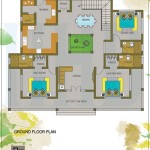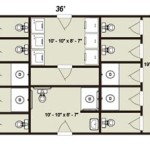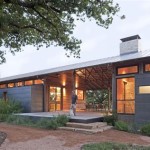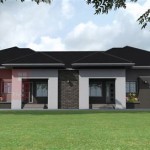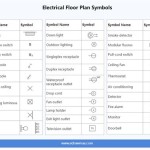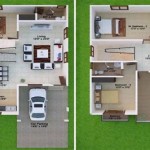First Floor Master Bedroom Addition Plans: A Comprehensive Guide
Adding a first-floor master bedroom suite is a significant home improvement project that offers numerous benefits. It can enhance accessibility, increase resale value, and provide a luxurious and private retreat within the home. However, successful execution requires careful planning, detailed design, and adherence to building codes. This article explores the key aspects of developing first-floor master bedroom addition plans, providing a comprehensive guide for homeowners considering this type of renovation.
Assessing Needs and Defining Objectives
The initial phase of planning involves a thorough assessment of individual needs and the definition of clear objectives for the addition. This includes considering who will be using the master bedroom, what functionality it needs to provide, and how it will integrate with the existing house. Key considerations during this assessment phase include:
*User Needs:
Identifying the specific requirements of the intended occupants is crucial. For example, older adults or individuals with mobility issues may require features such as wider doorways, roll-in showers, and grab bars. The design should prioritize accessibility and safety. *Spatial Requirements:
Determining the desired size and layout of the master bedroom is essential. This involves considering the necessary square footage for the bedroom itself, as well as the bathroom, walk-in closet, and any other desired features such as a sitting area or private patio access. *Lifestyle Integration:
Understanding how the master bedroom suite will be used on a daily basis is important for optimizing the design. For example, if the occupants enjoy reading in bed, ample lighting and comfortable seating should be incorporated. If they require a dedicated workspace, a desk or built-in cabinets should be included in the plans. *Budget Considerations:
Establishing a realistic budget early in the planning process is critical for making informed decisions and avoiding overspending. This involves researching the costs of construction materials, labor, permits, and professional services. The budget should also include a contingency fund to cover unexpected expenses.By carefully assessing needs and defining objectives, homeowners can ensure that the first-floor master bedroom addition meets their specific requirements and enhances their quality of life.
Navigating Design and Architectural Considerations
Once the needs assessment is complete, the next step is to develop detailed design and architectural plans for the addition. This phase involves working with an architect or design professional to create a comprehensive set of drawings that outline the layout, dimensions, and materials of the extension. Key aspects of this phase include:
*Site Analysis:
Before beginning the design process, it is crucial to conduct a thorough site analysis to assess the existing conditions and potential challenges. This includes considering factors such as the topography of the land, soil conditions, zoning regulations, and any existing easements or setbacks. *Layout and Flow:
The layout of the master bedroom suite should be carefully planned to ensure optimal flow and functionality. This involves considering the relationship between the bedroom, bathroom, walk-in closet, and any other desired features. The layout should also prioritize privacy and minimize noise transmission from other areas of the house. *Architectural Style:
The design of the addition should complement the existing architectural style of the house to maintain aesthetic consistency. This involves considering factors such as the roofline, siding, windows, and trim. The use of similar materials and colors can help to seamlessly integrate the addition with the existing structure. *Material Selection:
The selection of construction materials should be based on factors such as durability, aesthetics, energy efficiency, and cost. This includes choosing appropriate materials for the foundation, framing, roofing, siding, windows, and interior finishes. Consider materials that are both visually appealing and sustainable. *Energy Efficiency:
Incorporating energy-efficient features into the design of the addition can help to reduce energy consumption and lower utility bills. This includes using high-performance windows and insulation, installing energy-efficient lighting and appliances, and considering the use of renewable energy sources such as solar panels. *Accessibility Considerations:
Ensure that the design incorporates accessibility features as needed to accommodate individuals with mobility limitations. This may include wider doorways, roll-in showers, grab bars, and ramps.Through careful design and architectural planning, homeowners can create a first-floor master bedroom addition that is both functional and aesthetically pleasing, enhancing the overall value and appeal of their home.
Addressing Structural and Construction Elements
The construction phase of a first-floor master bedroom addition involves addressing several structural and construction elements to ensure the project is completed safely, efficiently, and in compliance with building codes. Proper planning and execution of these elements are crucial for the long-term durability and stability of the addition. Key aspects of this phase include:
*Foundation Design:
The foundation is the base of the addition and must be designed to support the weight of the structure and withstand soil conditions. The foundation design will depend on factors such as soil type, frost depth, and the overall size and weight of the addition. Common foundation types include slab-on-grade, crawl space, and full basement. *Framing:
The framing provides the structural support for the walls, roof, and floors of the addition. The framing should be designed to meet local building codes and withstand wind and seismic loads. Common framing methods include stick-framing and prefabricated wall panels. *Roofing:
The roofing system protects the addition from the elements and provides insulation. The roofing materials should be durable, weather-resistant, and aesthetically pleasing. Common roofing materials include asphalt shingles, tile, metal, and wood shakes. *Plumbing and Electrical:
Plumbing and electrical systems must be properly installed and connected to the existing house systems. This includes running water lines, drain lines, and electrical wiring to the addition. All plumbing and electrical work should be performed by licensed professionals and in accordance with local codes. *HVAC:
The heating, ventilation, and air conditioning (HVAC) system must be extended to the addition to provide comfortable temperature control. This may involve extending the existing HVAC system or installing a new, dedicated system for the addition. The HVAC system should be properly sized to meet the heating and cooling demands of the space. *Insulation:
Proper insulation is crucial for maintaining energy efficiency and reducing heating and cooling costs. The addition should be insulated to meet or exceed local building codes. Common insulation materials include fiberglass, cellulose, and spray foam. *Exterior Finishes:
The exterior finishes of the addition should complement the existing house and provide protection from the elements. This includes siding, windows, doors, and trim. The exterior finishes should be durable, weather-resistant, and aesthetically pleasing. *Interior Finishes:
The interior finishes of the addition should create a comfortable and inviting space. This includes flooring, paint, trim, and fixtures. The interior finishes should be selected based on personal preferences and the overall design of the addition.Careful attention to these structural and construction elements is essential for ensuring the long-term durability, safety, and functionality of the first-floor master bedroom addition.
Complying with Regulations and Obtaining Permits
Before beginning any construction work, it is crucial to comply with all applicable regulations and obtain the necessary permits. This ensures that the addition is built safely and in accordance with local building codes. Key aspects of this phase include:
*Zoning Regulations:
Zoning regulations dictate how land can be used and what types of structures can be built on a property. Before starting any construction, it is essential to review the local zoning regulations to ensure that the first-floor master bedroom addition is permitted and complies with all requirements. This may include setbacks, height restrictions, and lot coverage limitations. *Building Codes:
Building codes set minimum standards for the design, construction, and safety of buildings. The addition must be designed and built in accordance with the local building codes, which cover aspects such as structural integrity, fire safety, plumbing, electrical, and HVAC systems. *Permitting Process:
Obtaining the necessary permits is essential before starting any construction work. The permitting process typically involves submitting detailed plans and specifications to the local building department for review and approval. The building department will inspect the project at various stages of construction to ensure compliance with building codes. *Inspections:
Throughout the construction process, the building department will conduct inspections to verify that the work is being performed in accordance with the approved plans and building codes. These inspections may include foundation inspections, framing inspections, plumbing inspections, electrical inspections, and final inspections. *Homeowners Association (HOA) Approval:
If the property is located within a homeowners association (HOA), it is important to obtain approval from the HOA before starting any construction work. HOAs typically have rules and regulations regarding exterior modifications and additions.By complying with all applicable regulations and obtaining the necessary permits, homeowners can avoid costly delays, fines, and potential legal issues.
Managing Costs and Project Timeline
Effective project management and cost control are crucial for ensuring that the first-floor master bedroom addition is completed on time and within budget. This involves careful planning, communication, and monitoring throughout the construction process. Key aspects of this phase include:
*Budget Management:
Develop a detailed budget that includes all anticipated costs, such as materials, labor, permits, and professional fees. Track expenses closely and make adjustments as needed to stay within budget. Consider establishing a contingency fund to cover unexpected expenses. *Timeline Management:
Create a realistic timeline for the project that includes all key milestones, such as design completion, permitting, construction, and final inspections. Monitor progress regularly and make adjustments as needed to stay on schedule. *Contractor Selection:
Choose a qualified and experienced contractor to perform the construction work. Obtain multiple bids from different contractors and carefully review their qualifications, references, and insurance coverage. Ensure that the contract clearly outlines the scope of work, payment terms, and project timeline. *Communication:
Maintain open communication with the contractor, architect, and other professionals involved in the project. Regularly discuss progress, address concerns, and make decisions collaboratively. *Change Orders:
Any changes to the original plans or specifications should be documented in writing through change orders. Change orders should include a detailed description of the changes, the associated costs, and the impact on the project timeline.Effective project management and cost control can help to ensure that the first-floor master bedroom addition is completed successfully, on time, and within budget.

Pin On House Remodeling

Pin On For The Home

10 Considerations For The Bedroom Addition Of Your Dreams

Sample Master Suite Renovation Pegasus Design To Build

Home Addition Plan 5175

New Master Suite Brb09 5175 The House Designers

Sample Master Suite Renovation Pegasus Design To Build

New First Floor Bedroom Spurs Improvements Throughout Home

New Family Room Master Suite Kfbr3 Floor Plan Bedroom Addition Plans Home

Master Bedroom Floor Plans An Expert Architect S Vision

